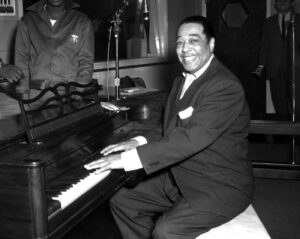 Eustis Estate
Eustis Estate
Development of Jazz Music
“Music has always been integral to the African American struggle for freedom.” – Bernice Johnson Regan, singer, and civil rights activist

The musical backdrop of the Chesnut family story reaches from the present day to the Antebellum South and the earliest expressions of Black music in America. Musical traditions brought by captured West Africans had an important place in the social, spiritual, and educational lives of enslaved communities in the American South. Traditions such as polyrhythm, improvisation, and call-and-response formed the underpinnings for earliest blues and jazz. During the Reconstruction
Era, these vernacular forms reached wider audiences and grew into more defined performance styles that were often influenced by the demands of white audiences. “Dixieland music” emerged from New Orleans in the 1880s, introducing the idea of improvisation to mainstream America. In the 1890s, the first published Ragtime scores appeared. With its quick, layered rhythms and heavy use of syncopation, the style soon swept the nation and defined American popular music at the turn of the century. The release of Scott Joplin’s famous “Maple Leaf Rag” on player piano roll in 1916 further increased the popularity of Ragtime and early jazz. Between the 1920s and World War II, a deeper exploration of jazz as an independent art form led to more subtle distinctions and greater range within the genre as musicians utilized their own perspectives to create deeper and more nuanced interpretations of the Black experience through music. The arrival of Prohibition and the Great Depression left Americans searching for new kinds of entertainment and the popularity of jazz, swing and big band music exploded in ensuing decades. Bands led by Duke Ellington, Cab Calloway, and Count Basie were broadcast on radios across the country, and artists like Louis Armstrong, Bessie Smith, and Billie Holiday came to represent the sound of jazz as we know it. It was in this world, often called “The Jazz Age,” that brothers Robert and David Chesnut left their mark.